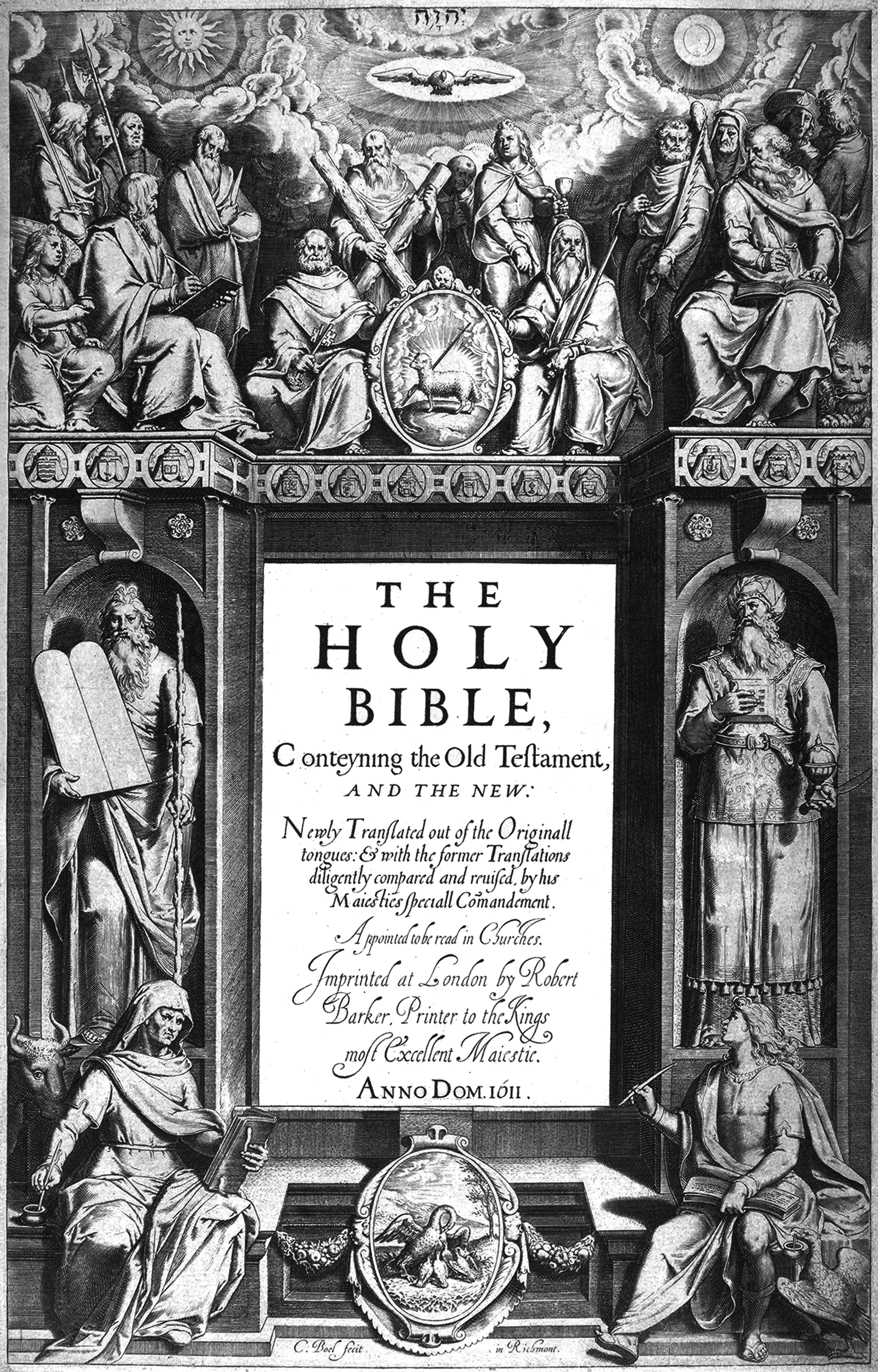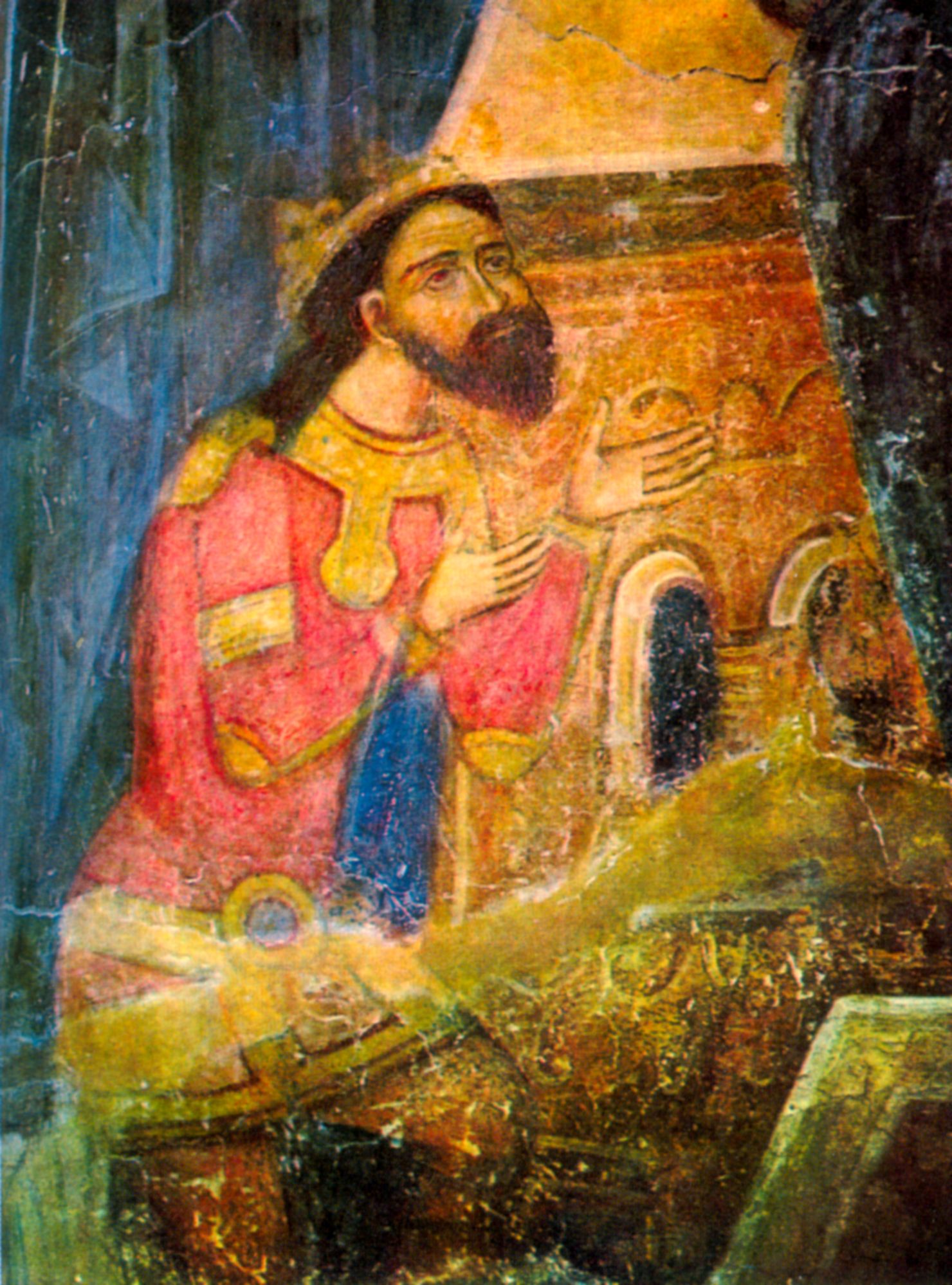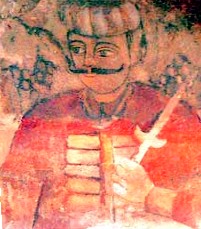|
Alexandru Coconul
Alexandru Coconul (14 August 1611 – 26 June 1632) was the ''hospodar'' and voivode of Wallachia from 1623 to 1627 and the ''hospodar'' of Moldavia from 1629 to 1630. He was the son of Radu Mihnea, who also was a ''hospodar''. He married Ruxandra Beglitzi. He was the last of Vlad the Impaler's Romanian bloodline. He died on 26 June 1632 in Istanbul. References Bibliography * 1611 births 1632 deaths 17th-century princes of Wallachia 17th-century Moldavian people Monarchs of Moldavia House of Drăculești {{Romania-bio-stub ... [...More Info...] [...Related Items...] OR: [Wikipedia] [Google] [Baidu] |
List Of Princes Of Wallachia
This is a list of princes of Wallachia, from the first mention of a medieval polity situated between the Southern Carpathians and the Danube until the union with Moldavia in 1859, which unification of Moldavia and Wallachia, led to the creation of Romania. Notes Dynastic rule is hard to ascribe, given the loose traditional definition of the ruling family. On principle, princes were chosen from any family branch, including a previous ruler's bastard sons, being defined as ''os de domn'', "of Voivode marrow", or as having ''heregie'', "heredity" (from the Latin ''hereditas''); the institutions charged with the Elective monarchy, election, dominated by the boyars, had fluctuating degrees of influence. The system itself was challenged by usurpers, and became obsolete with the Phanariotes, Phanariote epoch, when rulers were appointed by the Ottoman Empire, Ottoman Sultans; between 1821 and 1878 (the date of Romania's independence), various systems combining election and appointment were ... [...More Info...] [...Related Items...] OR: [Wikipedia] [Google] [Baidu] |
Wallachia
Wallachia or Walachia (; ; : , : ) is a historical and geographical region of modern-day Romania. It is situated north of the Lower Danube and south of the Southern Carpathians. Wallachia was traditionally divided into two sections, Muntenia (Greater Wallachia) and Oltenia (Lesser Wallachia). Dobruja could sometimes be considered a third section due to its proximity and brief rule over it. Wallachia as a whole is sometimes referred to as Muntenia through identification with the larger of the two traditional sections. Wallachia was founded as a principality in the early 14th century by Basarab I after a rebellion against Charles I of Hungary, although the first mention of the territory of Wallachia west of the river Olt dates to a charter given to the voivode Seneslau in 1246 by Béla IV of Hungary. In 1417, Wallachia was forced to accept the suzerainty of the Ottoman Empire; this lasted until the 19th century. In 1859, Wallachia united with Moldavia to form the Un ... [...More Info...] [...Related Items...] OR: [Wikipedia] [Google] [Baidu] |
17th-century Moldavian People
The 17th century lasted from January 1, 1601 (represented by the Roman numerals MDCI), to December 31, 1700 (MDCC). It falls into the early modern period of Europe and in that continent (whose impact on the world was increasing) was characterized by the Baroque cultural movement, the latter part of the Spanish Golden Age, the Dutch Golden Age, the French ''Grand Siècle'' dominated by Louis XIV, the Scientific Revolution, the world's first public company and megacorporation known as the Dutch East India Company, and according to some historians, the General Crisis. From the mid-17th century, European politics were increasingly dominated by the Kingdom of France of Louis XIV, where royal power was solidified domestically in the civil war of the Fronde. The semi-feudal territorial French nobility was weakened and subjugated to the power of an absolute monarchy through the reinvention of the Palace of Versailles from a hunting lodge to a gilded prison, in which a greatly expanded r ... [...More Info...] [...Related Items...] OR: [Wikipedia] [Google] [Baidu] |
1632 Deaths
Year 163 ( CLXIII) was a common year starting on Friday of the Julian calendar. At the time, it was known as the Year of the Consulship of Laelianus and Pastor (or, less frequently, year 916 ''Ab urbe condita''). The denomination 163 for this year has been used since the early medieval period, when the Anno Domini calendar era became the prevalent method in Europe for naming years. Events By place Roman Empire * Marcus Statius Priscus re-conquers Armenia Armenia, officially the Republic of Armenia, is a landlocked country in the Armenian Highlands of West Asia. It is a part of the Caucasus region and is bordered by Turkey to the west, Georgia (country), Georgia to the north and Azerbaijan to ...; the capital city of Artaxata is ruined. Births * Cui Yan (or Jigui), Chinese official and politician (d. 216) * Sun Shao (or Changxu), Chinese chancellor (d. 225) * Tiberius Claudius Severus Proculus, Roman politician * Xun Yu, Chinese politician and advise ... [...More Info...] [...Related Items...] OR: [Wikipedia] [Google] [Baidu] |
1611 Births
Events January–March * January 26 – Maximilien de Béthune, Duke of Sully is forced by Queen regent Marie's Regency Council to resign as chief minister of France. He is replaced by Nicolas de Neufville, seigneur de Villeroy. * February 27 – Sunspots are observed by telescope, by Frisian astronomers Johannes Fabricius and David Fabricius. Johannes publishes the results of these observations, in ''De Maculis in Sole observatis'' in Wittenberg, later this year. Such early discoveries are overlooked, however, and the first sighting is claimed a few months later, by Galileo Galilei and Christoph Scheiner. * March 4 – George Abbot is enthroned as Archbishop of Canterbury in England. * March 9 – Battle of Segaba in Begemder: Yemana Kristos, brother of Emperor of Ethiopia Susenyos I, ends the rebellion of Melka Sedeq. * March 19– 20 – The Moscow Uprising, an armed rising of the inhabitants of Moscow in the Tsardom of Russia against ... [...More Info...] [...Related Items...] OR: [Wikipedia] [Google] [Baidu] |
List Of Rulers Of Moldavia
This is a list of monarchs of Moldavia, from the first mention of the medieval polity east of the Carpathian Mountains, Carpathians and until its disestablishment in 1862, when Unification of Moldavia and Wallachia, it united with Wallachia, the other Danubian Principalities, Danubian Principality, to form the modern-day state of Romania. Notes Dynastic rule is hard to ascribe, given the loose traditional definition of the ruling family (on principle, princes were chosen from any branch, including a previous monarch's bastard sons – being defined as ''os de domn'' – "of Hospodar, domn marrow", or as having ''hereghie'' – "heredity" (from the Latin ''hereditas''); the institutions charged with the Elective monarchy, election, dominated by the boyars, had fluctuating degrees of influence). The system itself was challenged by usurpers, and became obsolete with the Phanariotes, Phanariote epoch, when monarchs were appointed by the Ottoman Empire, Ottoman Ottoman Dynasty, Sultans. ... [...More Info...] [...Related Items...] OR: [Wikipedia] [Google] [Baidu] |
List Of Rulers Of Wallachia
This is a list of princes of Wallachia, from the first mention of a medieval polity situated between the Southern Carpathians and the Danube until the union with Moldavia in 1859, which unification of Moldavia and Wallachia, led to the creation of Romania. Notes Dynastic rule is hard to ascribe, given the loose traditional definition of the ruling family. On principle, princes were chosen from any family branch, including a previous ruler's bastard sons, being defined as ''os de domn'', "of Voivode marrow", or as having ''heregie'', "heredity" (from the Latin ''hereditas''); the institutions charged with the Elective monarchy, election, dominated by the boyars, had fluctuating degrees of influence. The system itself was challenged by usurpers, and became obsolete with the Phanariotes, Phanariote epoch, when rulers were appointed by the Ottoman Empire, Ottoman Sultans; between 1821 and 1878 (the date of Romania's independence), various systems combining election and appointment were ... [...More Info...] [...Related Items...] OR: [Wikipedia] [Google] [Baidu] |
House Of Basarab
The House of Basarab (sometimes spelled as Bazarab, ) was a ruling family that established the Principality of Wallachia, giving the country its first line of List of rulers of Wallachia, Princes, one closely related with the House of Bogdan-Mușat, Mușatin List of rulers of Moldavia, rulers of Moldavia. Its status as a dynasty is rendered problematic by the official elective monarchy, elective system, which implied that male members of the same family, including illegitimate offspring, were chosen to rule by a council of boyars (more often than not, the election was conditioned by the military force exercised by candidates). After the rule of Alexander I Aldea, Alexandru I Aldea (ended in 1436), the house was split by the conflict between the House of Dănești, Dănești and the House of Drăculești, Drăculești, both of which claimed legitimacy. Several late rulers of the Craiovești claimed direct descent from the House after its eventual demise, including Neagoe Basarab, ... [...More Info...] [...Related Items...] OR: [Wikipedia] [Google] [Baidu] |
Vlad The Impaler
Vlad III, commonly known as Vlad the Impaler ( ) or Vlad Dracula (; ; 1428/31 – 1476/77), was Voivode of Wallachia three times between 1448 and his death in 1476/77. He is often considered one of the most important rulers in Wallachian history and a national hero of Romania. He was the second son of Vlad Dracul, who became the ruler of Wallachia in 1436. Vlad and his younger brother, Radu, were held as hostages in the Ottoman Empire in 1442 to secure their father's loyalty. Vlad's eldest brother Mircea and their father were murdered after John Hunyadi, regent-governor of Hungary, invaded Wallachia in 1447. Hunyadi installed Vlad's second cousin, VladislavII, as the new voivode. Hunyadi launched a military campaign against the Ottomans in the autumn of 1448, and Vladislav accompanied him. Vlad broke into Wallachia with Ottoman support in October, but Vladislav returned, and Vlad sought refuge in the Ottoman Empire before the end of the year. Vlad went to Moldavia in 144 ... [...More Info...] [...Related Items...] OR: [Wikipedia] [Google] [Baidu] |
Moldavia
Moldavia (, or ; in Romanian Cyrillic alphabet, Romanian Cyrillic: or ) is a historical region and former principality in Eastern Europe, corresponding to the territory between the Eastern Carpathians and the Dniester River. An initially independent and later autonomous state, it existed from the 14th century to 1859, when it united with Wallachia () as the basis of the modern Romanian state; at various times, Moldavia included the regions of Bessarabia (with the Budjak), all of Bukovina and Hertsa region , Hertsa. The region of Pokuttya was also part of it for a period of time. The Moldavia (region of Romania) , western half of Moldavia is now part of Romania, the eastern side belongs to the Moldova , Republic of Moldova, and the Chernivtsi Oblast , northern and Budjak , southeastern parts are territories of Ukraine. Name and etymology The original and short-lived reference to the region was ''Bogdania'', after Bogdan I, the founding figure of the principality. The name ... [...More Info...] [...Related Items...] OR: [Wikipedia] [Google] [Baidu] |
Voivode
Voivode ( ), also spelled voivod, voievod or voevod and also known as vaivode ( ), voivoda, vojvoda, vaivada or wojewoda, is a title denoting a military leader or warlord in Central, Southeastern and Eastern Europe in use since the Early Middle Ages. It primarily referred to the medieval rulers of the Romanian-inhabited states and of governors and military commanders of Poles, Hungarian, Lithuanian, Balkan, Russian people and other Slavic-speaking populations. In the Polish-Lithuanian Commonwealth, ''voivode'' was interchangeably used with '' palatine''. In the Tsardom of Russia, a voivode was a military governor. Among the Danube principalities, ''voivode'' was considered a princely title. Etymology The term ''voivode'' comes from two roots. , means "war, fight," while , means "leading", thus in Old Slavic together meaning "war leader" or "warlord". The Latin translation is for the principal commander of a military force, serving as a deputy for the monarch. In ... [...More Info...] [...Related Items...] OR: [Wikipedia] [Google] [Baidu] |







